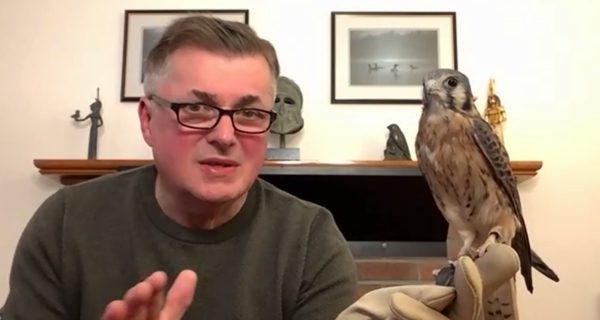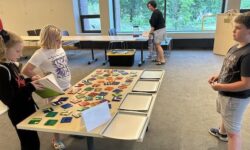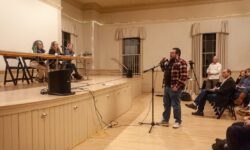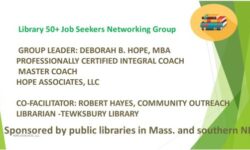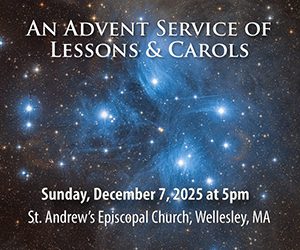By Amelia Tarallo
Hometown Weekly Staff
For those of us stuck on the ground, raptors are a mysterious lot. While we can glance outside our windows and spot a chickadee, robin, or blue jay with relative ease, Massachusetts' birds of prey are more often than not outside of comfortable viewing range. The Sherborn Public Library had a solution last week. On February 11, kids and parents were welcomed to join the Sherborn Library - virtually - for the New England Birds of Prey program, presented by Wingmasters’ Jim Parks.
The presentation began with a twenty minute introductory video about some of the raptors. After the video, Parks fielded questions. One viewer shared his own experience with three owls that happily sat on his swing set one day; he asked why they were there. “They definitely weren’t interested in going on the swing, I can tell you that,” responded Parks. Many kids in the audience laughed. “Owls find their food by listening. Hawks, eagles, and falcons find their food by looking,” explained Parks, “The three of them were probably barred owls. They were probably two to three months old. They were using the swing set because it’s like a branch but it’s low to the ground. Now, they can listen to things on the ground and even underneath the ground.” Another child asked if Parks had ever been hurt by a raptor. He quickly confirmed that he hadn’t, but that he had always taken precautions when handling them.
After answering a few more questions, Parks brought out a raptor for his audience to see. Though muted on Zoom, the facial reactions of the kids were clear: they were infatuated with the kestrel. This female kestrel was perfectly behaved for her debut of the day, as she sat perched on one of her handler's hands. Parks was quick to remind the kids that she wasn’t actually a pet, though. “She’s got a big problem: she doesn’t see properly. She has a condition in her eyes called cataracts. That’s why we take care of her. Not because she’s a pet, but because she can’t be released,” explained Parks.
Parks went on to explain that kestrels are part of the falcon family, and that they possess multiple adaptations: from coloring to help them blend in, to size, to the shape of their wings. Parks then recalled a question he was asked the other day about what type of bird he would choose to be. “I can tell you this: it would not be a falcon. I’d rather be a hawk or an eagle,” Parks explained. “Falcons have a hard life because their job is not [to] catch something like a mouse or chipmunk on the ground. Their job is to catch another bird while it’s in the air.”
Parks explained that the American kestrel is quickly becoming an endangered species. Like many raptors, it’s quickly losing habitat. “This is a bird your great-great-grandparents saw on a regular basis. But not anymore. This is a bird running out of places to live. Unfortunately, the future is not bright for the American kestrel,” said Parks.
Before ending the Zoom session, Parks answered any remaining questions from the audience. Many revolved around what one can do to help kestrels, and other birds.
The curiosity of the children in the audience was palpable, even though they could only see the bird from their computer screens. After their lesson on raptors, these kids will be sure to keep an eye on the sky - and maybe even their swing sets.




